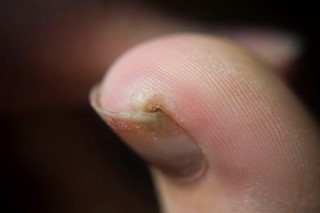Most common in guys, an ingrowing toenail is painful increase of the interior edges of a toenail into the surrounding skin. Tight or badly fitting shoes raise the risk.
What Causes It?
An ingrowing toenail curves under on one or both sides and cuts into the surrounding skin, causing pain, inflammation and occasionally disease. A little toenail with an extremely fleshy toe predisposes to it. The big toe is especially exposed to ill-fitting shoes pressing on an incorrect cut nail. Sometimes, harm can cause the skin around the nail to overgrow and engulf part of the nail. Lousy foot hygiene may also raise the risk of infection, resulting in inflammation.
What Are The Symptoms?
The symptoms of an ingrowing toenail may contain the following:
- pain, redness and swelling around the toenail
- broken skin at the nail edge, which oozes clear fluid, pus or blood.
You should consult your physician when you find a toenail has become ingrowing because it’s possible your toe will get infected.
What Is The Treatment?
- You can alleviate the pain of an ingrowing toenail by bathing your foot in warm salt water daily and by taking painkillers.
- You should shield the affected toe by keeping it covered with clean, dry gauze.
- If your toenail is infected, oral antibiotics or topical antibiotics will be prescribed.
A few simple measures can help prevent an ingrowing toenail from recurring.
- Keep your feet clean and wear right fitting shoes.
- Cut straight across your toenails, rather than along a curve, to prevent them growing into the skin.
If the problem recurs, a segment or all of the toenail will be removed to prevent the toenail from growing into the flesh of the toe again.
Self-Help
- Analyze the skin around the nail to see if the nail has penetrated the skin.
- Cut a miniature V-shape in the top border of the nail to alleviate pressure on the sides of the nail.
- Use an antiseptic lotion to the sides of the nail to prevent disease.
- If there’s any hint of redness or pus, lie down with your foot propped up. Apply a clean dressing to the toe.
- Cut your toenails straight across and not too short. Cut them consistently; don’t let them get too long.
- Make sure your shoes and socks aren’t too tight – you should have enough space to wriggle your toes.
- If your toenail is now infected, don’t wear socks; cut the toe out of an old shoe or wear sandals while the disease clears up.
Treatment
Chiropody
A chiropodist will cut your toenail to prevent additional difficulties. It’s significant not to leave splinters of nails at the side but they’re best removed by a specialist.
Removal of The Ingrowing Edges
Under a local anaesthetic your physician or chiropodist can lift up the ingrowing edges at the sides of the nail and cut them away so that none is left developing into the skin. This permits the disease to subside and the nail bed to fix. If you stick to self-help measures the nail shouldn’t grow inwards again.
Removal of an Ingrowing Toenail
Minor surgery may be needed for an ingrowing toenail. Your toe will be anaesthetized and cleaned with antiseptic. The nail, or part of it, will be removed, and phenol will be applied to the exposed nail bed to seal the blood vessels. You should be comfortable enough to walk within 24 hours of operation, and the wound should recover completely within a week.
Great foot hygiene keeps the feet healthy and reduces the likelihood of developing ingrowing toenail.

